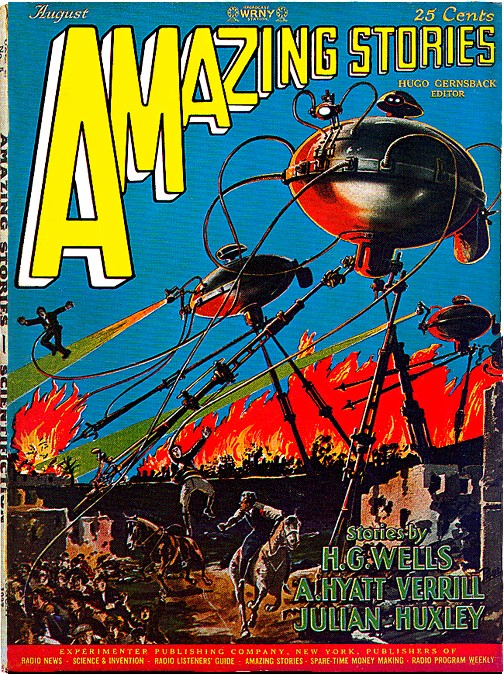The
Gender of Science Fiction:
I,
Robot:
misogyny and the heroic irony of Dr. Susan Calvin
|
|
The male bias
of early science fiction
- Historical
reasons: audience of adolescent boys
- Fantasy
allure of science: geek bodies and phallic objects (rockets,
weapons)
- S/f conducts
the gender stereotypes of its audience and authors
|
|
Dr. Susan
Calvin as an object of ridicule
- The "woman
scientist" as a contradiction in terms
- Calvin
as an object of scorn: name, appearance, radically alone
- But, Calvin
emerges as the 'hero' of I, Robot: why?
|
|
"Little
Lost Robot"
- Calvin's
understanding of the resentment of domination
- Hiding
by dissimulating difference
- Calvin's
solution: 3 tests
- "She
understands robots like a sister"
- Calvin
as the hero who solves the problem
- Calvin's
irony about man; her grasp of the positive potential of
robots
|
The
Evolution of the Robot/ Computer in I, Robot
|
|
Story
(first publication)
|
The
evolving morphology of the robot |
the
problem for humans |
|
"Robbie"
(1940)
|
Robot
(Robbie) as a cool toy:
|
domestic
social problem: is this the proper playmate for a human child?
|
|
"Runaround"
(1942)
|
Automated
worker robot (Speedy) with some independent functions:
|
how
can we get this tool to behave the way we want him to? |
|
"Reason"
(1941)
|
A
robot (Cutie) who has powers of independent speculative thinking:
|
if
we cannot refute its ideas, how can humans control of this
intelligent agent?
If it does its job better than humans, why bother? |
|
"Catch
That Rabbit" (1944)
|
Robot
(Dave) who manages other workers:
|
how
prevent robot anxiety at moments of decision? |
|
"Liar!"(1941)
|
A
mind reading robot (Herbie) who takes an interest in humans:
|
how
can we stop it from obeying our covert rather than overt commands?
responding to our unconscious rather than conscious desires?
|
|
"Little
Lost Robot" (1947)
|
A
robot (Nestor 10) whose intelligence rivals mans:
|
how
prevent it from developing a superiority complex and challenging
human priority? |
|
"Escape!"
(1945)
|
non-humanoid
computer, "the Brain," as a center of control; only
it can understand the space ship it designs and then
controls:
|
how
prevent this complex mainframe brain from treating humans
with condescension, (here) from making us the butt of its
jokes? |
|
"Evidence"
(1946)
|
The development
of the humanoid robot (Stephen Byerley) to the point of
perfect simulation: the cyborg is conceived:
|
why
shouldn't these humanoid robots be accepted as full participants
in our social and political life?
Won't their mental and ethical superiority make them our natural
leaders? |
|
"The
Inevitable Conflict" (1950)
|
The
humanoid robot (Byerley) invistigates the "machine"
that controls the world economy:
|
why
shouldn't we accept a regime of total control by the machines?
|






